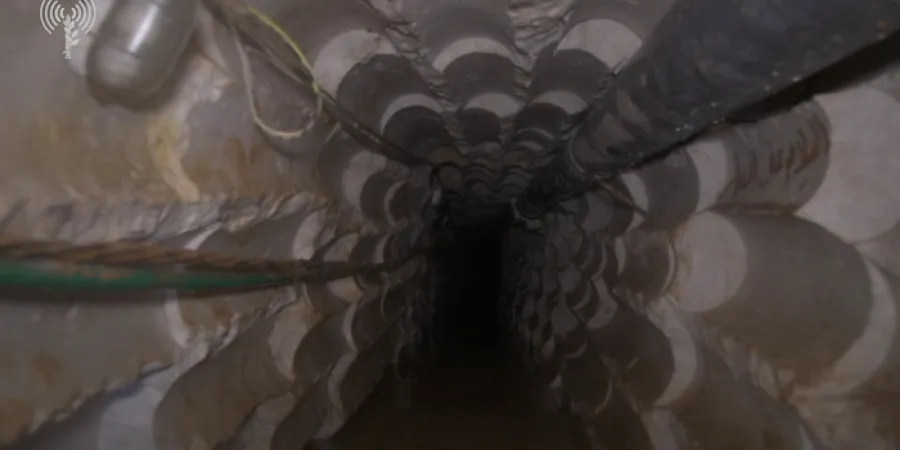IDF Destroys Hezbollah’s ‘Flagship’ Attack Tunnel
The Israeli military on Thursday completed the destruction of “the longest and most significant” cross-border attack tunnel dug by Hezbollah into Israeli territory. The tunnel, exposed during Operation Northern Shield last winter, was destroyed using sealants after a months-long intelligence investigation
IsraelDefense
|
30/05/2019
The IDF on Thursday announced it had completed the destruction of a Hezbollah attack tunnel crossing into Israeli territory from Lebanon.
The attack tunnel was exposed by the IDF last January as part of Operation Northern Shield and was thoroughly investigated since. It was described by the military as “the longest and most significant” subterranean passage found in the effort.
The IDF said the tunnel – one of six found during the operation – was the flagship tunnel of Hezbollah’s tunneling effort, in which the Shi’ite terror organization invested the most resources and efforts. It was equipped with advanced infrastructure for electricity, ventilation and communications systems. The tunnel’s infrastructure allowed for a prolonged stay of terrorists inside, efficient excavation capabilities and mobility of operatives.
According to the IDF statement, the tunnel was dug to a depth of 80 meters (260 feet), was a kilometer (3280 feet) long and penetrated 77 meters (250 feet) into Israeli territory. It began close to the Lebanese village of Ramiya, with an exit close to the Israeli villages of Shtula and Zar’it.
The tunnel was closed off with concrete and other sealants, the military explained. The section of the tunnel in Lebanese territory was destroyed and the whole structure was rendered useless.
“In this operation, the IDF deprived Hezbollah of a key element in its surprise attack plan,” the IDF said, adding that the military had been tracking Hezbollah’s attempt to develop underground capabilities for years with various technological and intelligence means.
[Sources: Israel National News, The Times of Israel, The Jerusalem Post]
The Israeli military on Thursday completed the destruction of “the longest and most significant” cross-border attack tunnel dug by Hezbollah into Israeli territory. The tunnel, exposed during Operation Northern Shield last winter, was destroyed using sealants after a months-long intelligence investigation
The IDF on Thursday announced it had completed the destruction of a Hezbollah attack tunnel crossing into Israeli territory from Lebanon.
The attack tunnel was exposed by the IDF last January as part of Operation Northern Shield and was thoroughly investigated since. It was described by the military as “the longest and most significant” subterranean passage found in the effort.
The IDF said the tunnel – one of six found during the operation – was the flagship tunnel of Hezbollah’s tunneling effort, in which the Shi’ite terror organization invested the most resources and efforts. It was equipped with advanced infrastructure for electricity, ventilation and communications systems. The tunnel’s infrastructure allowed for a prolonged stay of terrorists inside, efficient excavation capabilities and mobility of operatives.
According to the IDF statement, the tunnel was dug to a depth of 80 meters (260 feet), was a kilometer (3280 feet) long and penetrated 77 meters (250 feet) into Israeli territory. It began close to the Lebanese village of Ramiya, with an exit close to the Israeli villages of Shtula and Zar’it.
The tunnel was closed off with concrete and other sealants, the military explained. The section of the tunnel in Lebanese territory was destroyed and the whole structure was rendered useless.
“In this operation, the IDF deprived Hezbollah of a key element in its surprise attack plan,” the IDF said, adding that the military had been tracking Hezbollah’s attempt to develop underground capabilities for years with various technological and intelligence means.
[Sources: Israel National News, The Times of Israel, The Jerusalem Post]



